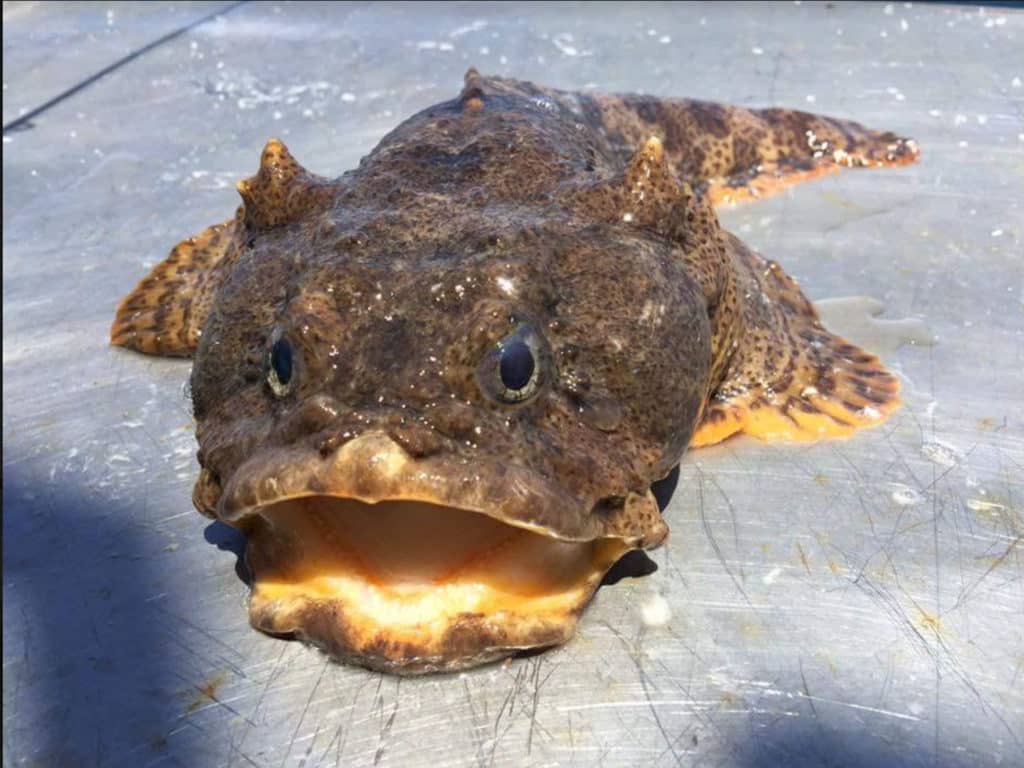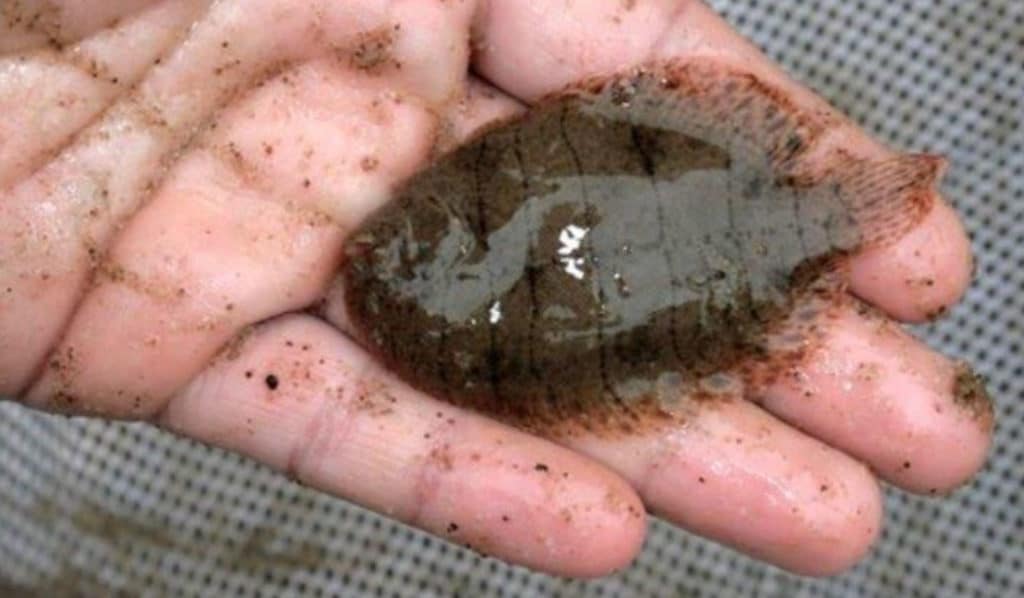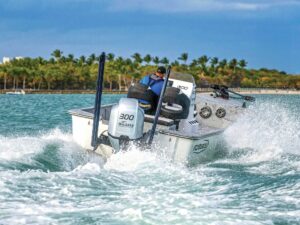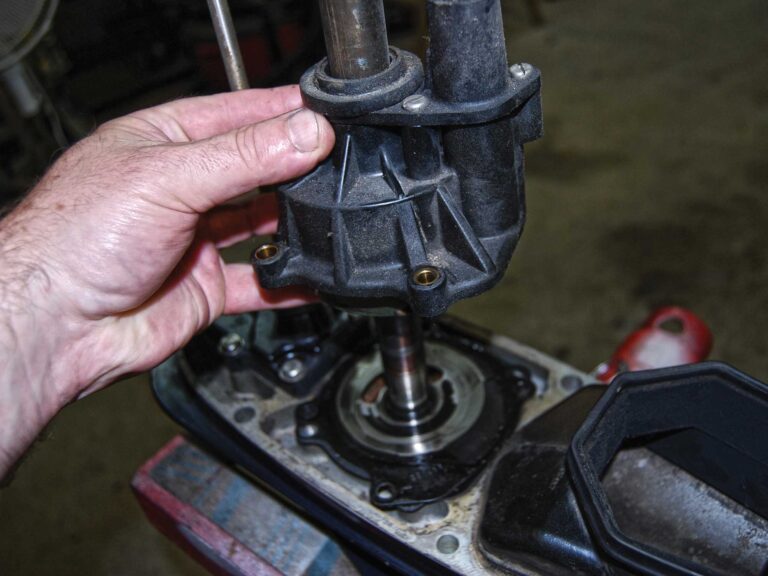
“Trash-fish,” or “rough fish” are longstanding pejoratives for any fish not considered sporting and / or not considered good table fare. While fighting ability and wariness can be measured, or at least, observed, taste is a matter of, well…taste! There exists any number of species that will prove good to eat, once you get past their looks and, possibly, angler pride.
So, whether you seek simply to try something new, or you experience one of those days where your primary quarry proves elusive, or you simply choose to add some adventure in your catch-to-table regimen, consider angling for these six species.
Editor’s Note: The six species listed here are coastal fish, commonly caught on the east coast of the US. If you know of other good-to-eat “ trash fish” from other regions, we’d love to hear about them. Please comment below.

Oyster Toad
You might say this is a face that only a father could love. It’s an oyster toad, common along the Atlantic coast, and in fact, the male of the species takes care of the young fish after they hatch. You might have learned to use a buttonhook dehooker tool specifically to flip toads off your baited hooks without risking their powerful, shell-cracking jaws and spines above the gill covers. But eat one? No way!
Except that this fish is an ambush feeder that never swims far from where it began life. It actually qualifies as a reef fish, though its preferred reefs are likely to be anything from a pile of oysters to the sunken timbers of an old drawbridge. Thus its body is all mild-tasting white muscle, without the strong flavors associated with the oily, bloody streaks of meat along the sides of migratory species like bluefish.
How to prepare an oyster toad? Pick a big one to start, say 12-15”. When it comes aboard, handle it carefully behind the gills, whack it firmly between the eyes, and ice it down as you would any other food fish. Fillet it as you would any other panfish. Skin it carefully, as its scale-less skin is soft. You’ll find you have a pair of pretty white fillets to fry or broil. Then maybe you’ll love this face too. It’s an interesting critter.

Atlantic Menhaden (Pogy, Bunker)
Sure, we’ve all eaten menhaden…at second hand. They are major forage for every predator along the Atlantic coast, from dive-bombing gannets and ospreys through striped bass, bluefish, red drum, cobia, and bluefin tuna to humpback whales. The fish pack a lot of protein and nutritious oils in their bodies. Except for the birds and the whales, almost every species we like to catch and eat gorges on bunkers when they can find their dense schools. That’s why we catch or buy them for bait or chum ourselves. But the smell of an oily pogy chum slick in hot weather can turn the stomachs of even seasoned mariners. Eat one? No way!
Except that these silvery fish are close kin to herring and American shad that we do eat, despite their bony internal architecture. A century ago, fishermen in New England picked through the bones cheerfully, frying them for breakfast. It’s important to note, though, that those fish came out of cold water and got eaten the next morning. Taken that way, they’re not bad. Pick a small one, fillet and skin it immediately, and chill the meat till you cook. Surprise!

Cow Nosed Ray
Whatever you’ve heard about cheap scallops being punched-out chunks of ray wing is malarkey. The meat of a cow-nosed ray’s wings looks nothing like a scallop of any size. But treat it right and it’s tasty, tender and mild like veal. The truth is, these rays are badly under-rated as sport and food fish. For one thing, they are graceful, powerful swimmers. If you hook one accidentally on light tackle while bottom fishing, the fight will be more exciting if you chase it with the boat. You may well be impressed by its speed. We’ve had experienced anglers mistake rays for red drum because of it. At boatside, use a net or gaff to raise the ray’s head onto the gunwale and hit it hard between the eyes to kill it. Then take a pair of pliers and carefully remove the barbed spine at the base of its tail. Now the ray is harmless, unless you decide to put your fingers into its mouth. (Remember that its teeth are fused together into a pair of hard blocks to crush shellfish.) Ice the fish down if at all possible.
The meat you want is the muscle in each wing, above and below a center layer of cartilage. Lay the fish on a cleaning table and slice along each wing’s base, where it joins the body, cutting down to the cartilage. Then fillet outward, as you would from a flounder/fluke’s backbone. When finished with the top side, turn the critter over and fillet the white undersides of the wings. You’ll find you have four triangles of meat (and probably a lot of blood on the cleaning table). The easiest way we’ve found to skin these ray fillets is to cut them into strips around three inches wide and then cut as you would with any bony fish. Soak the meaty strips overnight in buttermilk in a covered dish in a refrigerator. Cooking? Ray meat holds together well enough to grill. Experiment with rubbing spices, starting mild and working up. It also poaches well, in white wine and your favorite seafood herbs.

Silverside (Spearing)
“Whitebait” is a global, generic term for “fried tiny fish.” In other countries, various species of anchovies and juvenile herring fit the term. On the U.S. Atlantic coast, an easy-to-gather candidate is the Atlantic silverside, also known as spearing. These little fish, which grow to six inches but are more commonly 2-3” in length, are major forage for stripers, bluefish, and Atlantic mackerel. While they are generally too fragile to use as live bait, many shops sell them frozen, especially for fluke. They are also easy to gather with a small minnow seine pulled along a beach.
To eat them, the best strategy is to seine up a bunch and prepare them fresh, maybe on the beach where you caught ‘em, over an open fire (where legal) or a gas burner. Dust them in seasoned flour (black pepper or crab spice such as Old Bay) and fry them in hot oil. Drain so they’re crunchy. Eat them whole (or for the squeamish, pinch off the heads on larger specimens). Dip them in a mayonnaise-based sauce if you like. They’re tasty bait!

Hogchoker
The hogchoker is the only member of the sole Family native to the bays of the U.S. East Coast. It’s a common catch in shoreline minnow seines but grows to only 8” at most. The eyes are on the right side, unlike those of fluke and Southern flounder, and the mouth is small, sized for eating worms and tiny crustaceans. To learn the meaning of its name, hold one flat in the palm of your hand and slide it forward for an inch. Pretty slick, right? Now try to move it backward. Its scales hold it fast. Not something you’d want in your throat, at least not whole.
Remember, though that it’s a true sole. Fillet several larger specimens with a short knife and skin them. Sauté in butter with a squeeze of lemon and place on crackers. Not bad for hors d’oeuvres, are they?
Read Next: Practice Proper Fishing Etiquette

Bait Bonus: Grass Shrimp
All along the shallow coastal bays of the East Coast, predator fish feed on grass shrimp. Easy to gather with a minnow seine or a fine-mesh roller net, they make great bait and chum for everything from stripers and weakfish to fluke and white perch. Got a few left over after a trip? Steam them or boil them just till they turn pink, maybe with a little bit of crab spice. Pinch off the heads, to get rid of the sharp parts, and eat ‘em whole. They’re full of flavor for us too.









